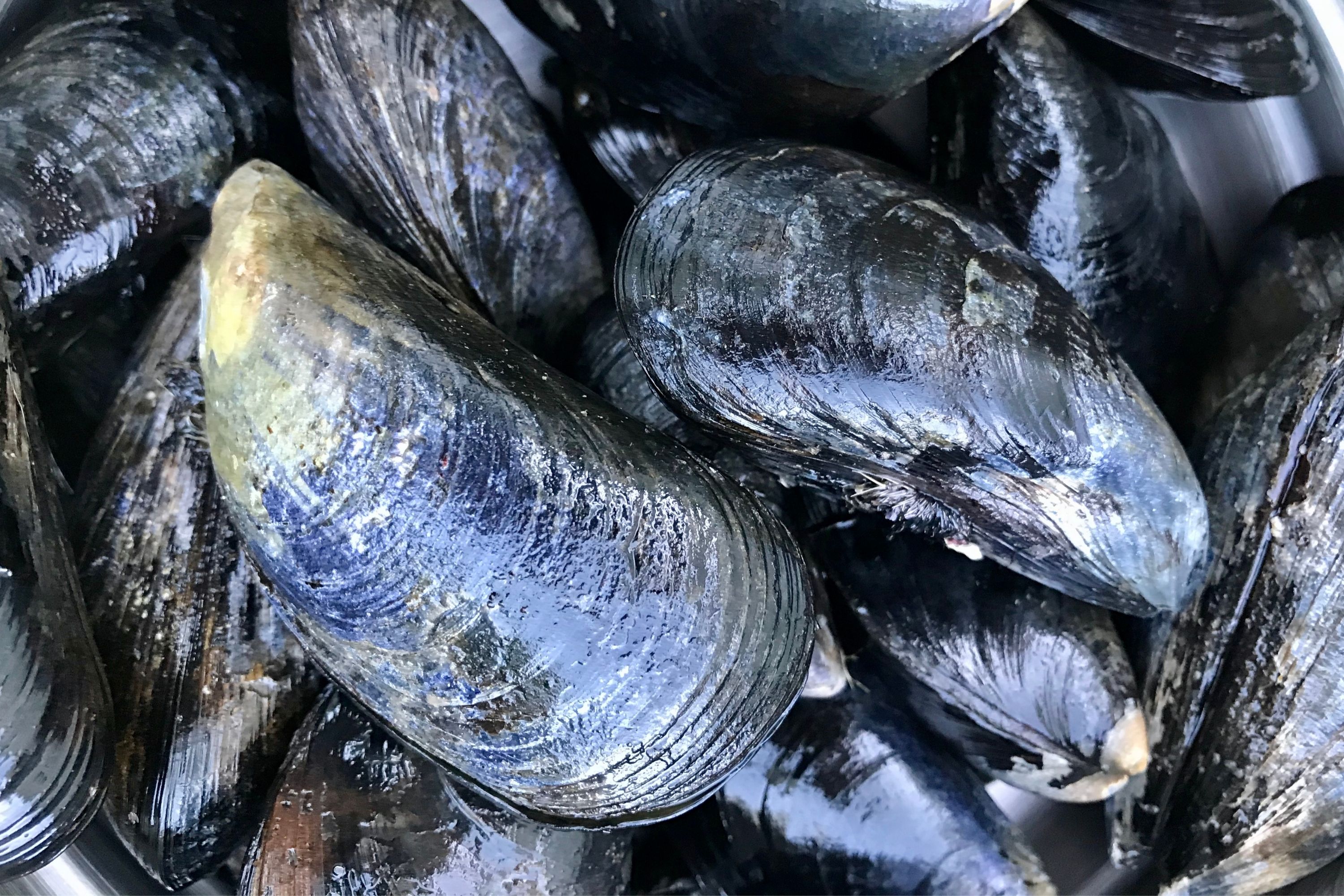Blue mussel
(Mytilus edulis)

Description
The blue mussel (Mytilus edulis), also known as the common mussel, is a medium-sized edible marine bivalve mollusc in the family Mytilidae, the mussels. Blue mussels are subject to commercial use and intensive aquaculture. A species with a large range, empty shells are commonly found on beaches around the world. The Atlantic blue mussel is native on the North American Atlantic coast, but is found intermixed with M. trossulus north of Maine. In Atlantic Canada, M. trossulus was found to have smaller shell growth values than M. edulis and contain less meat than M. edulis. Keeping this in mind, M. edulis, under raft culture conditions, is estimated to have an economic value of 1.7 times M. trossulus. In Europe it is found from French Atlantic coast northwards to Novaya Zemlya and Iceland, but not in the Baltic Sea. In France and in the British Isles, it makes hybrid zones with M. galloprovincialis, and also is sometimes intermixed with M. trossulus. The genetically distinct lineage of M. edulis present in the Southern Hemisphere has been attributed to subspecies Mytilus edulis platensis (now Mytilus platensis). Blue mussels are boreo-temperate invertebrates that live in intertidal areas attached to rocks and other hard substrates by strong (and somewhat elastic) thread-like structures called byssal threads, secreted by byssal glands located in the foot of the mussel. The shape of the shell is triangular and elongated with rounded edges. The shell is smooth with a sculpturing of fine concentric growth lines but no radiating ribs. The shells of this species are purple, blue or sometimes brown in color, occasionally with radial stripes. The outer surface of the shell is covered by the periostracum which as eroded, exposes the colored prismatic calcitic layer. Blue Mussels are semi-sessile, having the ability to detach and reattach to a surface allowing the mollusk to reposition itself relative to the water position. Mussels have separate sexes. Once the sperm and eggs are fully developed they are released into the water column for fertilization. Although there are about 10,000 sperm per egg, large proportions of eggs deposited by blue mussels are never fertilized. As few as 1% of larvae that do mature ever reach adulthood. The majority are eaten by predators before completing metamorphosis. The reproductive strategy seen in blue mussels is characteristic of planktotrophs.
Taxonomic tree:







